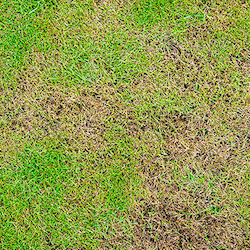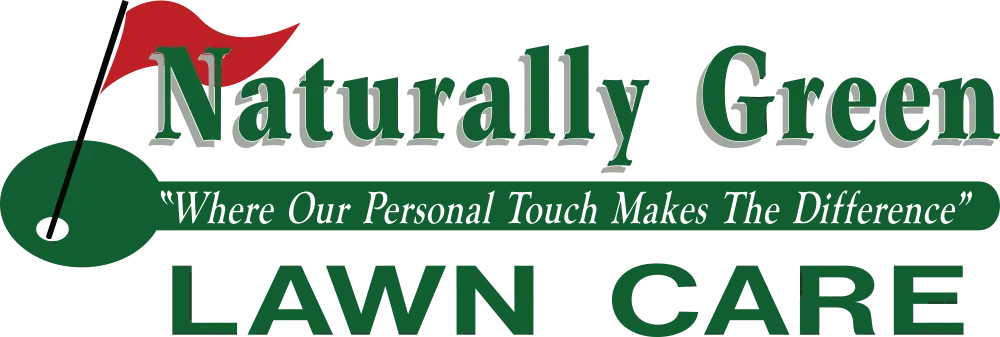PREVENT COMMON LAWN DISEASES FROM INVADING YOUR HARTFORD AREA LAWN

Our lawns have become more important to us than ever before. With many of us having to cancel trips last year and stay home, entertaining in our own backyard has never been so essential. Gardening has become a favorite past time and keeping your outdoor space clean and inviting is imperative. But, as many of us have realized, it takes a lot of work. A lot of time and energy goes into perfecting your lawn, and whether it's you or a company you've hired, no one wants to see their hard work ruined by damaging lawn diseases or fungi.

Our summers in the Hartford, Connecticut area are typically hot and humid. Storms are frequent and leave behind sticky moisture in the air. These climate factors make the perfect breeding ground for different types of fungi. Fungi can begin to grow and take over your lawn in an instant. So how do you best protect your grass from these damaging lawn invaders? Learn how to identify them, prevent them, and know who to call when you need professional help.
COMMON LAWN DISEASES PLAGUING OUR HARTFORD AREA LAWNS
Brown Patch
Let's start with the most common symptom, a brown patch. Brown patches in your lawn can mean a variety of things but the actual disease called brown patch is a disease caused by the Rhizoctonia fungus. It can affect all cool-season lawn grasses, but it is especially harmful to ryegrass and tall fescue. Like its namesake, it appears as irregular circular patches that are brownish or yellow in color and range from six inches to several feet in diameter. Affected leaves show lesions on them.
Brown patch is a foliar disease, which means that it harms only the blades of the grass and not the crown or root system. The fungus overwinters in your grass or soil beneath in the form of fungal bodies and can survive for years until the conditions are right. During periods of high temperatures and high humidity, when the air is saturated with a warm moisture, the fungus will start to form. Excessive nitrogen and irrigation can increase your chances of brown patch. Therefore, the best way to prevent this fungus from appearing is through proper watering practices, improved air circulation through aeration and dethatching, and proper lawn care.
Sometimes brown patch will go away on its own, but fungicide applications can be used to treat it. While you can buy fungicides at your local home goods stores, it's best to use a professional lawn care service with the training and knowledge to diagnose and treat lawn diseases.
Dollar Spot
No, money does not suddenly start growing from the ground, although that would be nice. Dollar spot is a fungus that typically occurs in late spring or summer when the humidity is high here in Hartford, and temperatures range between 60 and 85 degrees. It first appears as small patches of dead grass on your lawn approximately the size of a dollar coin, hence where it gets its name. These dead patches will be tan to beige colored. Dollar spot has become more of a common lawn problem here in Connecticut and affects almost all types of cool and warm-season grasses, including:
- Fescue
- Ryegrass
- Bentgrass
- Bluegrass
- Bermudagrass
- Zoysia grass
The key to dollar spot prevention is proper lawn care practices, especially when it comes to fertilizing. Also, keep your lawn clear of leaves and debris as they can trap moisture for extended periods, sparking fungi like dollar spots.
Red Thread
Red Thread is a fungus that grows when grass becomes too wet, and the humidity is high. Your grass blades will begin to have red to pink-like threads on them. Cool-season grasses such as ryegrass, bentgrass, bluegrass, and fine fescue are more susceptible. While areas affected will appear to be dead, red thread doesn't kill the grass. This is because the fungus actually lives in the thatch and the soil. The pink growths that appear in the grass do not infect the crown or the plant's roots, so the grass is not killed by the fungus.
Treatment with a fungicide will help eliminate it. The best way to prevent this fungus from growing is through a lawn maintenance program that includes proper fertilization with appropriate amounts of nitrogen. Beware that it could take up to two years to fully prevent a red thread from coming back.
Pythium Blight
Pythium blight first appears as small circular black or purple spots in hot, humid weather. Ryegrass and bluegrass are most susceptible and can sustain significant damage. As the disease progresses, the affected areas die, become matted in appearance, and white cotton growths may develop (not to be confused with powdery mildew). The best way to prevent this disease is through proper lawn maintenance and care. Reduce moisture build-up by watering in the early morning, avoid excessive rates of nitrogen which is highly susceptible to Pythium blight, and relieve compaction and soil drainage for better air circulation. Do not mow when this disease is present, as it can spread the disease to other parts of your yard. A fungicide treatment can be used for both preventive and for treatment once diagnosed.
HELP PREVENT FUNGUS FROM ATTACKING YOUR LAWN WITH LAWN CARE
All of the fungi above have a few important things in common. All start to appear in warm, humid weather, and most can be prevented through a proper lawn maintenance program and care of your lawn. Of course, this is not always the case. Weather and other factors are sometimes inevitable, but appropriate care and maintenance of your yard can go a long way in preventing lawn disease, fungi from taking over, and pest infestations.
PROTECT YOUR HARTFORD AREA LAWN WITH A LAWN MAINTENANCE PROGRAM THAT INCLUDES FUNGICIDE AND DISEASE CONTROL
Naturally Green Lawn Care provides a comprehensive lawn care service that includes fertilization, weed control, and disease and fungus control. Our lawn care program will help keep your lawn green and weed-free while also protecting it from grubs, pests, disease, and fungal attacks. Our experts are trained and knowledgeable and know how to spot fungi and diseases and how best to treat them.
Learn more about this highly effective lawn care program, our disease and fungus control, and all the other services we provide by visiting our website or calling us now. You can contact us here online.
